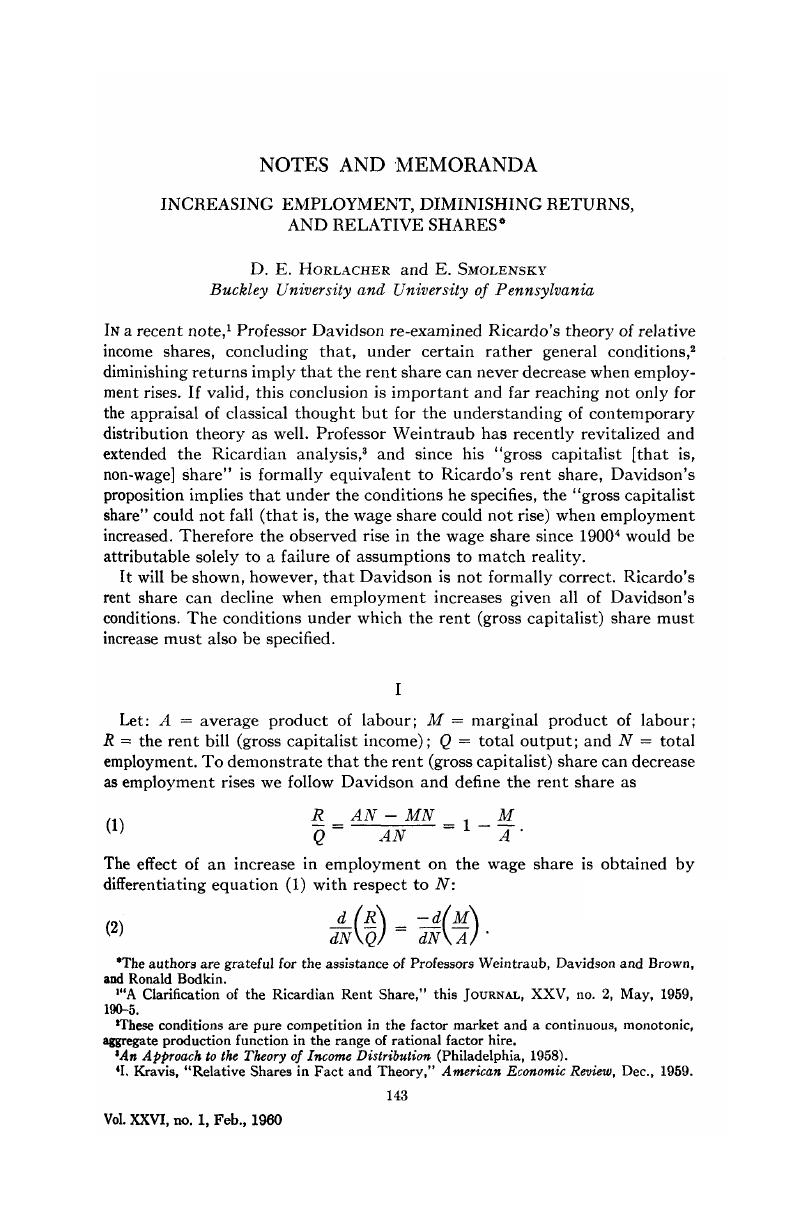Article contents
Increasing Employment, Diminishing Returns, and Relative Shares*
Published online by Cambridge University Press: 07 November 2014
Abstract

- Type
- Notes and Memoranda
- Information
- Canadian Journal of Economics and Political Science/Revue canadienne de economiques et science politique , Volume 26 , Issue 1 , February 1960 , pp. 143 - 147
- Copyright
- Copyright © Canadian Political Science Association 1960
Footnotes
The authors are grateful for the assistance of Professors Weintraub, Davidson and Brown, and Ronald Bodkin.
References
1 “A Clarification of the Ricardian Rent Share,” this Journal, XXV, no. 2, 05, 1959, 190–5.Google Scholar
2 These conditions are pure competition in the factor market and a continuous, monotonie, aggregate production function in the range of rational factor hire.
3 An Approach to the Theory of Income Distribution (Philadelphia, 1958).Google Scholar
4 Kravis, I., “Relative Shares in Fact and Theory,” American Economic Review, Dec., 1959.Google Scholar
5 Weintraub, , An Approach to the Theory of Income Distribution, 51.Google Scholar
6 It is interesting to note that S. Carlson, upon whom Davidson relies for his proof, draws a production function from this family, but incorrectly sketches A = M at zero employment. Carlson, S., Pure Theory of Production (London, 1939), 56.Google Scholar
7 “Diminishing Returns and the Relative Share of Labour,” Quarterly Journal of Economics, Nov., 1953.
8 Davidson, , “A Clarification of the Ricardian Rent Share,” 192.Google Scholar
- 1
- Cited by


